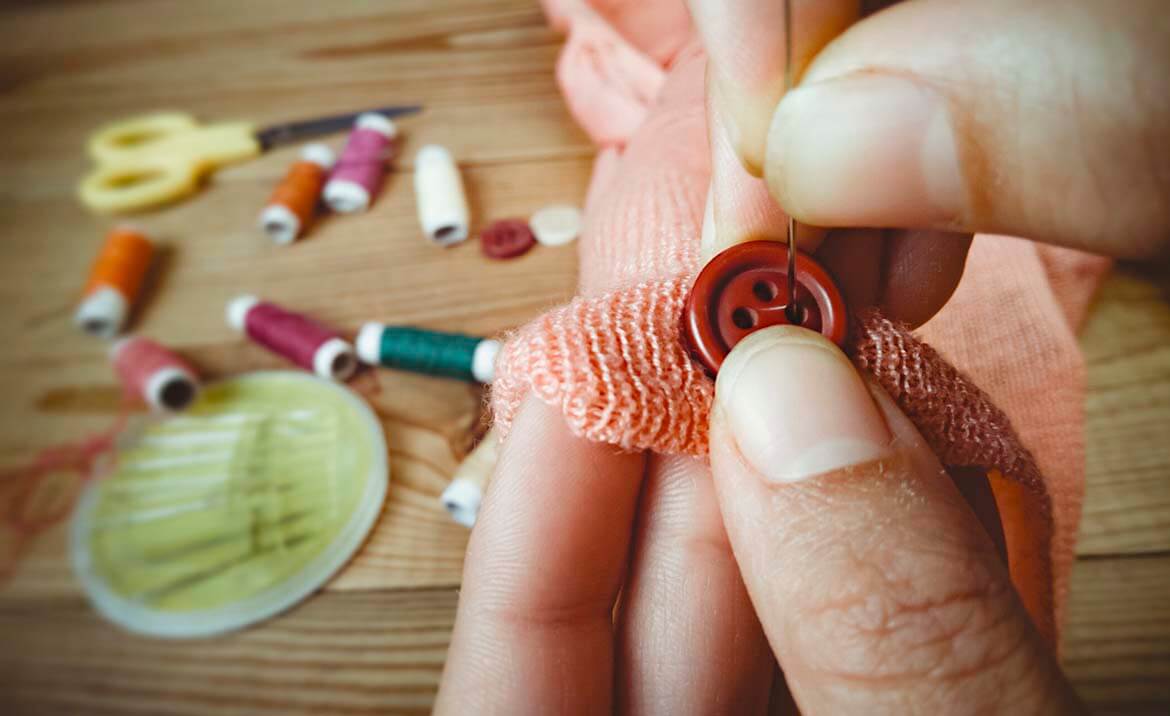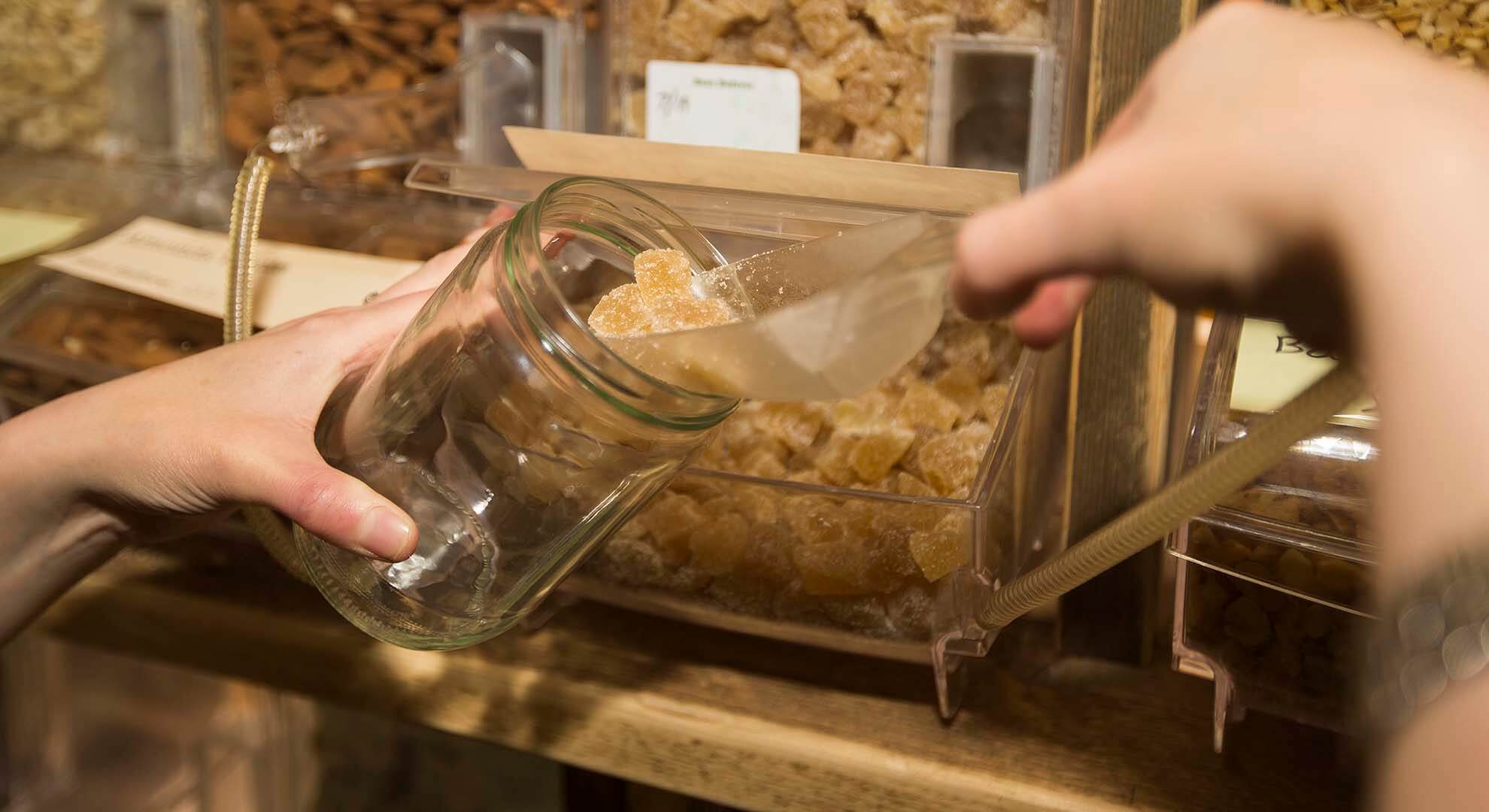
12 ways to waste less
We have a chance to step away from the past and make small but powerful changes that can make a big impact when it comes to reducing the amount of stuff we throw away each day.
With four-fifths of Scotland’s carbon footprint being driven by our demand for new products and materials, it’s about finding ways to do a little bit more with a little bit less that will keep existing materials in use for longer and significantly reducing our carbon footprint.
So, step forward and get off on the right foot with these resolutions to waste less in 2022 that will fit into your daily life and score big wins for the planet…
1. Make second-hand your first choice for clothes
It’s no secret we buy too many clothes. In Scotland, at least 118,000 tonnes of clothes and 25,000 tonnes of shoes and bags are bought every single year.
Many are only worn for a short amount of time before ending up in the bin or languishing in the wardrobe never to see the light of day again. When clothes are thrown in the non-recyclable bin, they will either be sent to landfill or incineration.
Fast fashion harms the planet as producing clothes demands vast amounts of water and energy and gives off climate-warming carbon emissions. Wearing our clothes for an extra nine months would reduce carbon, waste and water footprints by around 20 to 30% each.
What can you do?
This year, try shopping second-hand in-store or online when you need something ‘new to you’. With current restrictions, your local store might be temporarily closed, check to see if they are currently offering an online click and collect service.
Next step: How long could you go without buying new? Three months, six months…a year? Set yourself a target to work towards.
Bonus: Instead of consigning worn-out clothes to the bin or the bottom drawer for the rest of their life, consider repairing them. Check out Repair What You Wear for easy-to-follow mending videos.
Wearing our clothes for an extra nine months would reduce carbon, waste and water footprints by around 20 to 30% each. #HowToWasteLess

2. Planning is key
In Scotland, households and consumers generate 600,000 tonnes of food waste every year. When food ends up in landfill, it doesn’t just sit there. Food waste gives off climate-warming methane, many times worse than carbon dioxide in the short term.
Wasting food also represents a waste of the energy, time and resources that went into producing it.
What can you do?
Reduce your food waste by taking a list and only buying what you need.
Next step: If you do have extra food, use the freezer. Even eggs can be frozen – just crack your eggs into a reusable food bag or container.
3. Recycle your food waste
For any leftovers or inedible food, like peelings and tea bags, put them in a recycling caddy. Food waste can be recycled into sustainable energy used to power our homes and businesses.
What can you do?
Make sure you have your food caddy handy and check with your local council what you can and can’t put in it.
Next step: Get creative with leftover ingredients – the Love Food Hate Waste Scotland website has lots of delicious recipes for common surplus ingredients.

4. Break up with single-use
Single-use items, made up of all types of materials, often end up as waste. Simply buying and wasting less would have a dramatic impact on Scotland’s carbon footprint.
What can you do?
Challenge yourself to ditch unnecessary disposable items, like single-use sachets or packaging, from your everyday life. There are lots of reusable alternatives out there, from coffee cups to straws.
5. Give a gift that keeps on giving
Subscriptions, donations and sponsorship are a great way to share the love without the ‘stuff’ – and support a good cause.
What can you do?
Buy a subscription for a streaming platform like Netflix for the movie buff in your life, subscribe to a comic or magazine, sponsor an animal, or donate to a charity close to a loved one’s heart.
5. Give a gift that keeps on giving
Subscriptions, donations and sponsorship are a great way to share the love without the ‘stuff’ – and support a good cause.
What can you do?
Buy a subscription for a streaming platform like Netflix for the movie buff in your life, subscribe to a comic or magazine, sponsor an animal, or donate to a charity close to a loved one’s heart.
6. Make use of existing tech
It’s still common for companies to tempt us into buying gadgets we don’t need. Don’t fall for the need to upgrade to the latest phone when your current one still works.
What can you do?
If your phone breaks, check if it can be repaired first.
Next step: If your phone can’t be repaired, buy a refurbished one – a great way to save money and the planet at the same time.
7. Leave the car at home – get active and walk or cycle
Leaving the car at home, especially for short journeys, reduces the demand for fuel and helps to drive down carbon emissions.
What can you do?
If your journey isn’t too far, beat the traffic and walk or cycle.
8. Stop hoarding goods and pass them on
Everything we buy, from laptops to clothes, are made up of valuable resources that are gathering dust and going to waste.
What can you do?
Help keep resources in circulation by passing them on, selling online or donating to a second-hand store (some stores are currently requesting customers phone ahead or have certain days sets aside for drop-offs – best to check with your local store direct before you head out).
9. Have a Trial Period
Every year, disposable menstrual products wash up on Scotland’s beaches and cause harm to marine life. Nine out of ten respondents to our #TrialPeriod survey are now using reusable period products – would you?
What can you do?
Look for plastic-free alternatives - just always remember to make sure disposable options go in the bin and not down the loo.
Next step: Switching to reusable pants, pads or pants helps to protect the environment and reduce the demand for new materials. Reusable alternatives are just as leakproof as disposables and can last for a long time. The cups, for example, can last for up to ten years.
10. Use a reusable container to fill up on loose groceries
Did you know there are refill stores across Scotland that sell groceries free of single-use packaging? These shops minimise waste by selling loose products in dispensers. Locavore in Glasgow’s southside sells loose pasta, rice and even personal care items, like shampoo and conditioner.
What can you do?
Take some spare Tupperware and jars from home to fill up on exactly how much you need without the disposable packaging.

11. Upcycle a piece of furniture
Breathe new life into a tired piece of furniture with a bit of upcycling, no previous skills required. Upcycling saves money and resources, plus it’s fun and creative. Your homemade pieces of furniture will be more special than mass-produced equivalents.
What can you do?
Just a simple lick of paint could completely transform a piece of furniture and bring it in line with the latest trends.
12. Be a better recycler in 2021
Recycle as much as you can from around the home, including food waste. Make a point of checking what your local authority can and can’t collect and find out what else can be recycled at your local Household Waste Recycling Centre (pre-booking required for some local authorities).
What can you do?
Set up a recycling collection system at home to make it easier and quicker to separate your items.
Next step: Terracycle schemes now collect hard to recycle items such as crisp packets and baby food pouches.
